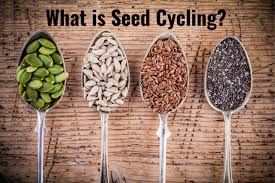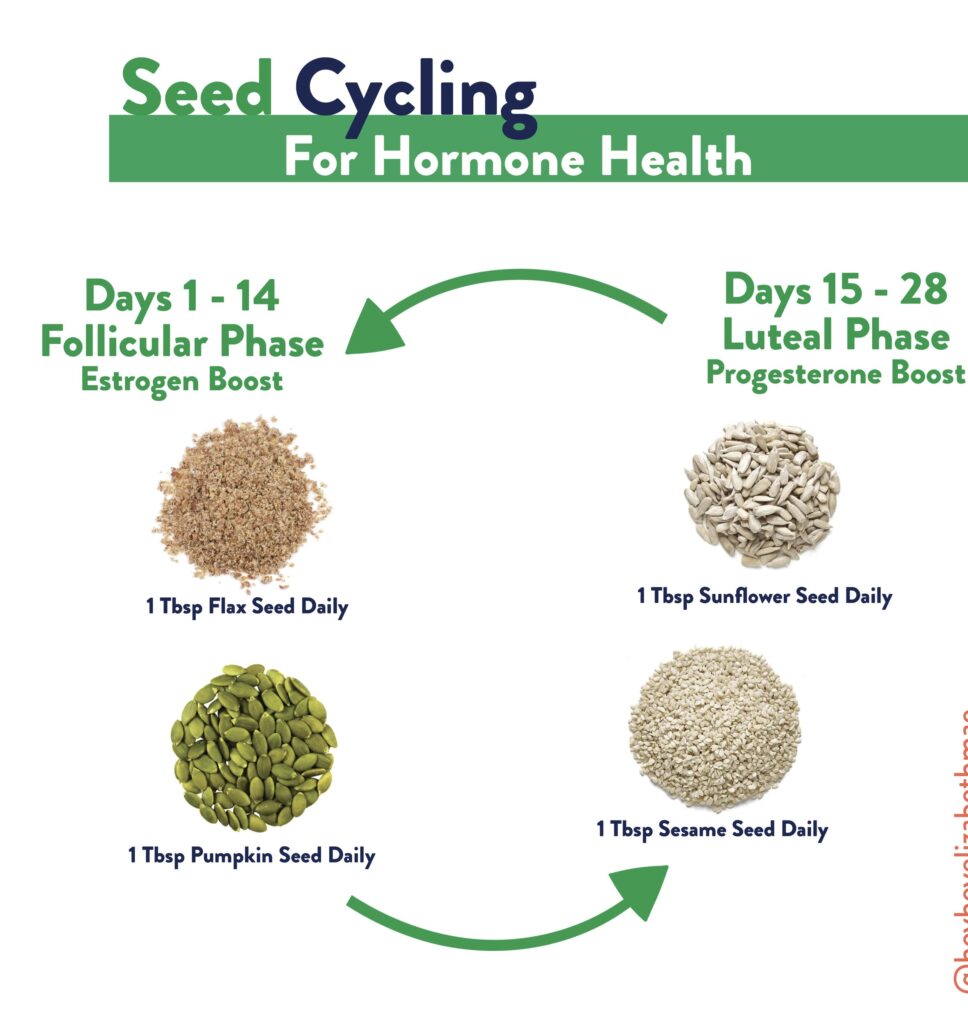Hormones are complex chemical messengers that affect our health in many ways, from the quality of our skin, sleep cycles, and mood to our fertility, libido, and weight. When our hormone levels are normal and healthy, our bodies function optimally and our minds thrive. When these chemical messengers are unbalanced, we may experience symptoms such as acne, premenstrual syndrome (PMS), mood disorders, infertility, and polycystic ovarian syndrome (PCOS).
In a world where so many external and internal factors can disrupt this delicate balance, hormonal health is a hot topic on the rise. What if we told you there was an effective (and inexpensive) way to support your hormones right in your kitchen? Seed cycling, which has recently become popular in the wellness community, has been proposed as a way to support optimal female hormone balance through the consumption of nutrient-dense seeds at specific times during the menstrual cycle.

Seed cycling is the practice of eating specific seeds during the two main phases of your menstrual cycle (follicular and luteal) to help promote the healthy balance of estrogen and progesterone levels. It’s a gentle and completely natural way that helps reduce PMS symptoms, boost fertility, and can help regulate, and other symptoms as a result of hormonal imbalances. Seed cycling can be used at any stage of a woman’s life (including post-menopause)
Let’s Explore How Seed Cycling Works
Phase 1 (Follicular Phase Day 1-14)
As we already know, estrogen is one of the primary hormones involved in the follicular phase, and we can help support our bodies by including seeds such as pumpkin seeds and flax seeds for the duration of this phase. Both of these seeds contain phytoestrogens that can help balance estrogen levels. As the name suggests, phytoestrogens are plant-based sources of estrogen that modulate estrogen receptors, helping to regulate estrogen levels and supporting their antiestrogenic and estrogenic effects.
The phytoestrogens in pumpkin seeds have been shown to support women with symptoms related to low estrogen, such as hot flashes, joint pain, and headaches related to menopause. Flax seeds are considered a functional food as they contain hormone balancing omega-3 fatty acids, soluble fiber, and protein. These little seeds contain lignans, a type of phytochemical that has been studied for its effects on the menstrual cycle, such as supporting longer luteal phases and higher progesterone to estradiol ratios. Both seeds are also a great source of zinc, which helps support the production, metabolism, and removal of excess estrogen.
Phase 2 (Luteal Phase Day 15-28)
During the luteal phase, when progesterone is at its peak, we can focus on consuming sesame seeds and sunflower seeds to support optimal progesterone production. Both seeds are high in selenium, an essential mineral that has been shown to support sex hormone production, specifically in the luteal phase. Sesame seeds are not only anti-inflammatory but have been shown to support hormonal health by improving antioxidant status and blood lipid levels in women in their postmenopausal years. Sunflower seeds are also a great dietary source of vitamin E, a beneficial lipid-soluble antioxidant that has been shown to support female reproductive health via its anti-inflammatory properties.
The best way to incorporate seed cycling into your daily routine
During the follicular phase to ovulation (days 1 to 14), eat 1-2 tablespoons each of raw, fresh ground flax seeds and pumpkin seeds. During the ovulation-luteal phase (days 15 to 28), eat 1-2 tablespoons each of raw, freshly ground sunflower and sesame seeds. Note: you want to use seeds that are raw and grind them fresh.
Ready to start incorporating seed cycling into your routine? Here are some simple guidelines to follow to ensure effective seed cycling.
- Purchase raw organic seeds when possible for optimal nutritional value.
- Store seeds in the refrigerator or freezer to avoid the oxidation that can occur from sunlight or heat exposure.
- Freshly grind your seeds before consuming.
If you have tried it, drop me a comment and let me know your experience!

